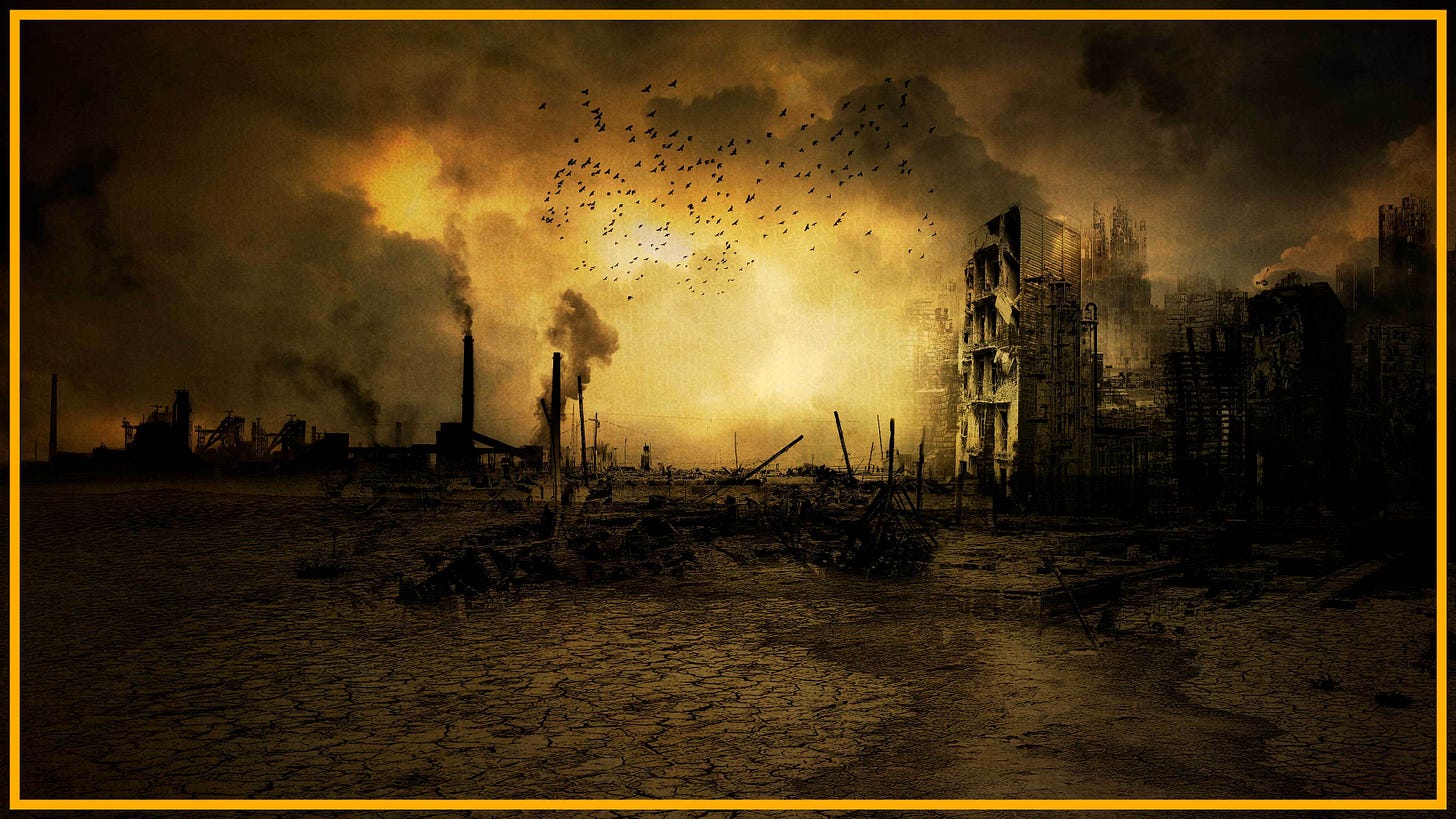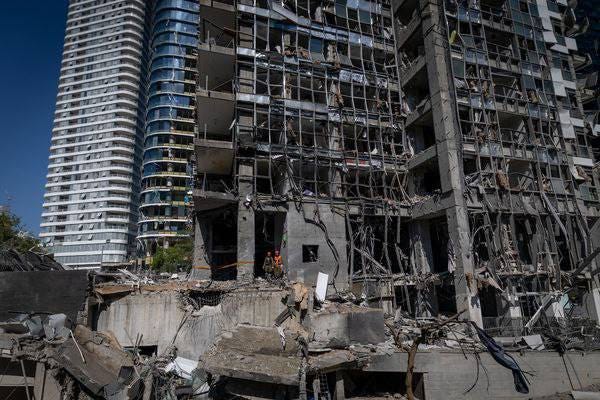OVERVIEW
As we track Modernity's collapse in the American Empire's disintegration, it appears we have reached a new stage of awareness and, counterintuitively, apathy. For some, the reality of a nuclear regional war in Southwest Asia is the greatest direct threat in the last fifty years. For most, it is just another war in America’s endless list of wars.
The level of leadership insanity within the American Empire makes this the most dangerous in our modern history, but even that insanity is normalized. On a social level, the use of misinformation has been replaced by blatant lies or, in the case of Israel, rigid censorship that immediately failed.
At a more superficial level, the Trump regime's gross incompetence is a study in the chaos of political collapse within the planetary collapse. This has created a narrative based on the threat of nuclear weapons for Iran, which has none and no program to produce them, that justifies Israel, a nuclear power since the 1970s, in attacking Iran.
Israel is now in trouble as Iran is carefully destroying both military installations and public infrastructure. Trump et al, who have only vague ideas of Iran’s location, size, and population, are going to bomb Iran at Netanyahu’s demand. Nothing good will come from this. See below in WAR for more on this.
Also in this week’s issue the usual range of rapid tech development but also the beginings of serious discussion of the ruling tech oligarchs’ fantasies and why wealth makes people into assholes.
DISASTERS - CLIMATE
The Crisis Report — 63
I am becoming more and more confident that we are looking at +3°C of warming BY 2050.
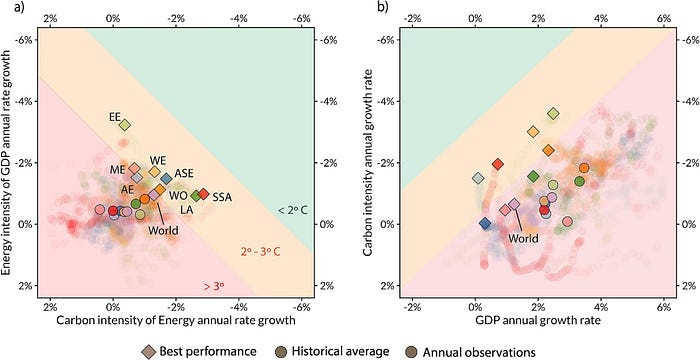
This paper comes right out and says it.
The history of a + 3 °C future: Global and regional drivers of greenhouse gas emissions (1820–2050) — Global Environmental Change, Volume 92, July 2025, 103009
Let's consider this carefully. Reaching +3°C of warming by 2050 probably means civilizational COLLAPSE by 2050. At least the insurance industry thinks so.
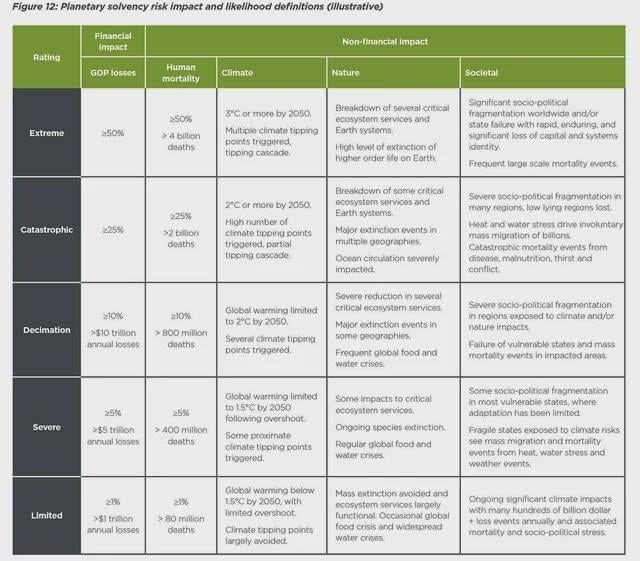
Their estimates are:
Global Warming limited to +2°C by 2050 = approximately -10% decline in global population (800 million deaths).
Global Warming of +2°C or more by 2050 = approximately -20% decline in global population (2 billion deaths).
Global Warming of +3°C or more by 2050 = approximately -50% decline in global population (4 billion deaths).
At +3°C of warming they forecast:
“Multiple climate tipping points triggered, tipping cascade. Breakdown of several critical ecosystem services and Earth systems.” “High level of extinction of higher order life on Earth.” “Significant socio-political fragmentation worldwide and/or state failure with rapid, enduring, and significant loss of capital and systems identity.” “Frequent large scale mortality events.”
IF, we are looking at COLLAPSE by 2050 then we can expect the “tempo” of collapse related\inducing events to significantly increase over the next five years. Collapse by 2050 means.
We are no longer at the “End of the Beginning”. We are at the “Beginning of the End.”
With that in mind, let's look at what this paper has to say. It starts with this.
ABSTRACT
Identifying the socioeconomic drivers behind greenhouse gas emissions is crucial to design mitigation policies. Existing studies predominantly analyze short-term CO2 emissions from fossil fuels, neglecting long-term trends and other GHGs.
We examine the drivers of all greenhouse gas emissions between 1820–2050 globally and regionally.
The Industrial Revolution triggered sustained emission growth worldwide — initially through fossil fuel use in industrialized economies but also as a result of agricultural expansion and deforestation.
Globally, technological innovation and energy mix changes prevented 31 (17–42) Gt CO2e emissions over two centuries. Yet these gains were dwarfed by 81 (64–97) Gt CO2e resulting from economic expansion, with regional drivers diverging sharply: population growth dominated in Latin America and Sub-Saharan Africa, while rising affluence was the main driver of emissions elsewhere.
Meeting climate targets now requires the carbon intensity of GDP to decline 3 times faster than the global best 30-year historical rate (–2.25 % per year), which has not improved over the past five decades.
The 1.5°C Chimera Is Over: We’ll Burn Through the Remaining Carbon Budget by 2027
From apex predator to prisoner of our own heat
Ricky Lanusse
We were sold a chimera: a fantasy stitched together from hope and hubris. But the original Chimera was no dream. She was fire-breathing flesh: lion’s head, goat’s body, serpent’s tail. A grotesque hybrid that devoured men whole — but also left scorched earth behind.
Today’s chimera wears a suit. It shows up in net-zero pledges, green growth mantras, and conference stage platitudes about “limiting warming to 1.5°C.” For a while, the world believed in it. A political compromise masquerading as a climate threshold. A number that let nations pretend we could still have it all — growth without limits, fossil fuels without guilt, comfort without consequence.
The monster is real. And the world just keeps feeding it.
At our current rate of emissions, Earth has less than three years before it exhausts the remaining carbon budget that offers even a coin-flip chance of staying below 1.5°C. Not decades — three years.
This isn’t some activist’s blog. This is the verdict of the latest Indicators of Global Climate Change (IGCC) report — a collaborative autopsy by over 60 of the world’s top climate scientists, including former IPCC authors, filling the gap between the IPCC’s sixth assessment (AR6) in 2021 and the seventh assessment, expected in 2028. It confirms what frontline communities already know in their bones: we’re not just brushing up against the 1.5°C threshold — we are barreling toward it.

Think of our planet’s “carbon budget” like a bank account. In 2020, we had 500 billion tonnes of CO₂ we could still emit while keeping global warming at safer levels. But we’ve been spending this money fast: by the start of 2025, the remaining budget had shrunk to 130 billion tonnes, falling by almost three-quarters in five years. And with current global emissions at about 40 billion tonnes per year (like an annual spending rate), we’re set to empty this account by 2027.
Because let’s be honest here for a second: do you really see the world stepping on the brakes of modern convenience and unlimited 5G in the name of ‘carbon budgets’? Yeah, I didn’t think so either.
We are not even close to slowing down. Fossil fuel use is still rising, forests are still falling, and the carbon-intensive bones of our economy are still firmly in place.
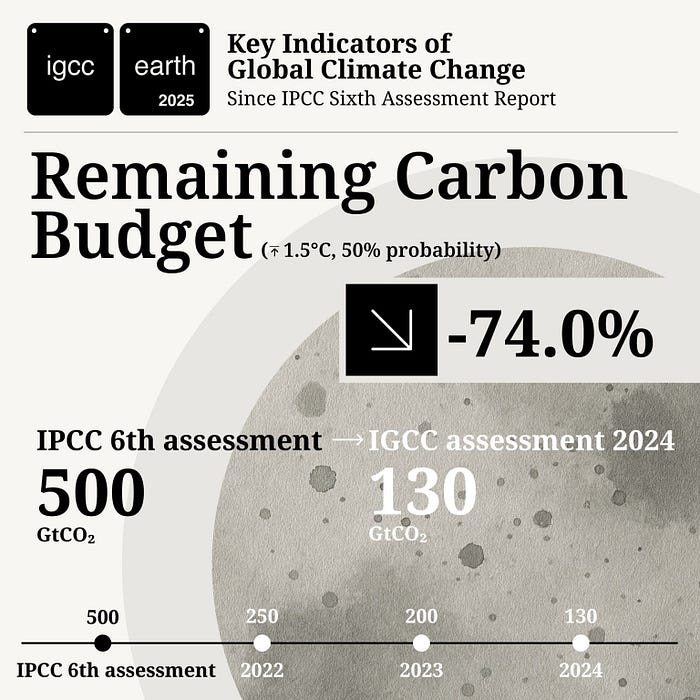
2024 was likely the hottest year in 125,000 years of human history. 2025 now only has a 6% chance to be the warmest year on record, a 50% chance to be the second warmest, and a 43% chance to have an annual average above 1.5 °C. There’s a 70% chance that the five-year average warming will exceed 1.5°C between 2025 and 2029. And for the first time, data suggests even a 1% chance of hitting 2°C within five years.
So yes, the chimera is breathing fire. Not from some mythic cave — but from the scorching fields where crops fail, from glaciers that melt into once-cold rivers, and from songbirds dropping mid-flight in the heat.
We were told 1.5°C was a guardrail. A threshold that, if we stayed below it, might save us. The difference between adaptation and collapse. Between food security and ration lines. Between summer vacations and summer evacuations. But the world didn’t build a bridge. It built a billboard. And now we’re watching the smoke rise behind it.
This is the here and now. So if you’re sweating through one more impossible summer, if the air feels heavier, if your child asks why the trees aren’t green anymore — you already know:
‘Good riddance’ to the 1.5° limit.
The New Baseline: Burning
The height of 2024’s temperatures, with best estimates of 1.52 °C (with a range of 1.39–1.65 °C) above pre-industrial levels, while unprecedented in at least the last 2,000 years, was almost predictable. In fact, scientists now suggest we should consider 2024’s observed temperatures as unexceptional.
Climate wars are approaching — and they will redefine global conflict
By Topher McDougal published April 30, 2025
Climate change's profound reshaping of conflict dynamics is already underway. The question facing humanity now is not whether we will confront these pressures, but how we will choose to do so.
Without action, climate change will destabilize society, potentially resulting in wealthy individuals taking matters into their own hands, McDougal argues. (Image credit: JMGehrke/Getty Images)
Climate change is increasingly recognized not merely as an environmental crisis but as a threat multiplier, worsening political and economic tensions worldwide. Two factors — water scarcity and mass migration — are poised to completely reshape global conflict dynamics.
Without coordinated global action, these pressures may induce a vicious circle of interlocking issues: destabilization of livelihoods, unprecedented waves of civil unrest and political violence, mass migration and surging border conflicts.
The world is interconnected. A shift in one location will impact another. Fresh water is a resource we all need to survive, and as it dwindles, conflicts can flare. At the same time, rising sea levels and soaring temperatures will make many cities and huge swathes of land uninhabitable. Put together, these human-induced changes will lead to the widespread movement of people into countries that are hell-bent on protecting their resources.
In response, governments will likely deploy ever-more sophisticated military technology to protect their own citizens, becoming more insular in the process. Once capitalism is at risk of crumbling, social divides increase, and nations, corporations, or even ultra-wealthy individuals may begin to take matters into their own hands — addressing climate change in a way that benefits them, potentially at the expense of others.
Water scarcity
Civilizations first emerged along fertile downstream river valleys — the Nile, Tigris, Euphrates and Indus. Nowadays, upstream states increasingly control the water that downstream populations rely upon — and in a warming world, that could fuel explosive conflicts.
Consider Iraq: The once-rich agricultural areas near Basra have become increasingly barren due to upstream Turkish dams and accelerating climate change. This scarcity has heightened tensions between Iraq's diverse regions, including the upstream Kurdistan Regional Government (which has proposed adding 245 dams to the governorate), central Baghdad, and the downstream southern populations near Basra.
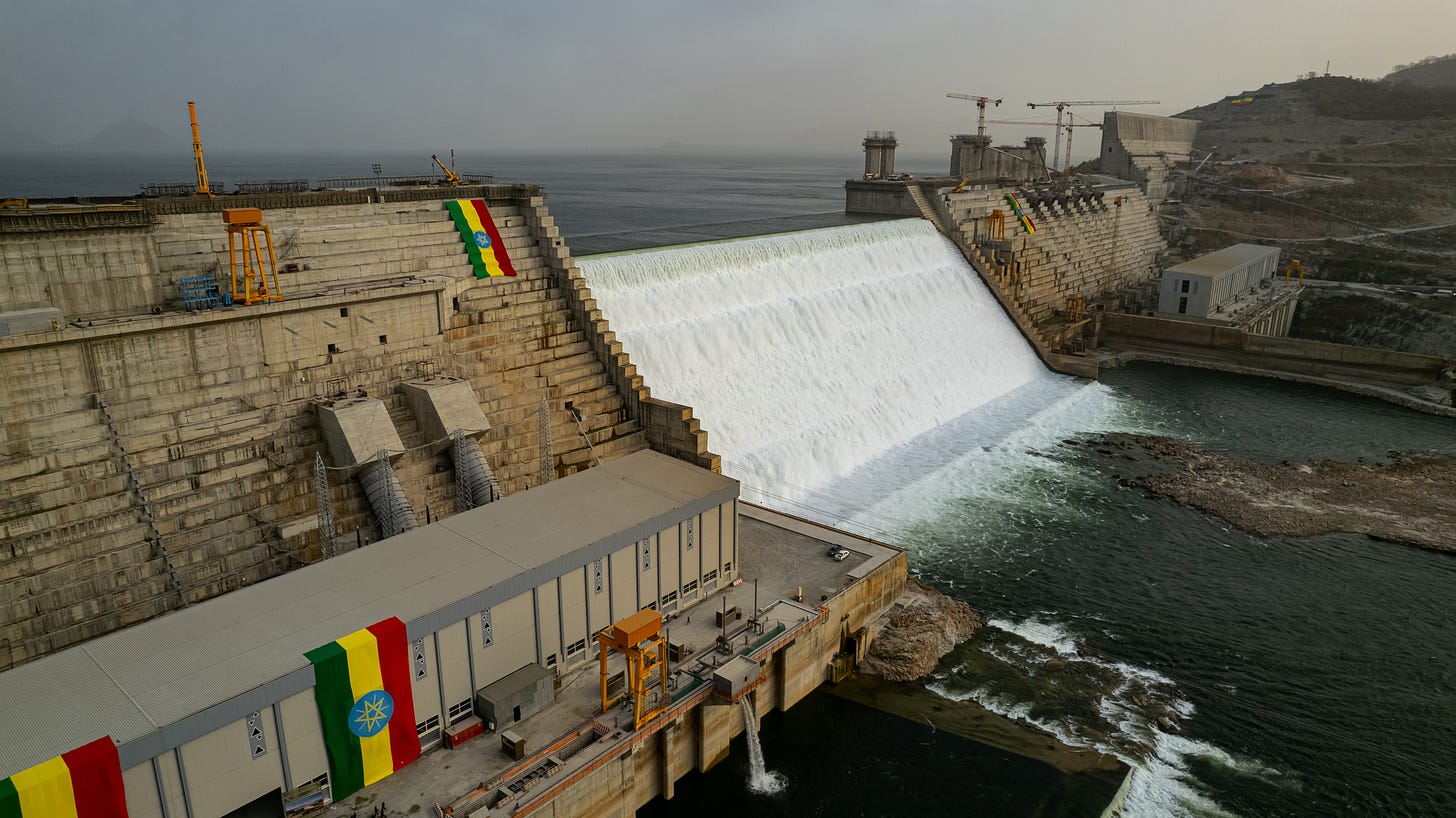
Similar conflicts are brewing in the Nile Basin, where Ethiopia's Grand Renaissance Dam has heightened Egypt's anxieties over future water security. While Egypt's recent history of internal unrest has many roots, projected water shortages linked to the dam and increasingly erratic rainfall have amplified fears about food insecurity, unemployment and migration, all of which could compound domestic instability.
As global warming accelerates, it's possible that downstream states may clandestinely carry out or finance acts of ecoterrorism against their upstream neighbors, for instance by destroying dams, as Russia did in Ukraine.
Closer to home, recent tensions between the United States and Mexico over water rights have spilled over into economic policy. President Donald Trump recently threatened sanctions and tariffs against Mexico over disputes related to water treaties involving the Rio Grande and Colorado rivers, which have had dwindling flow in recent years thanks to climate change.
In 2020, conflict began when Mexican government forces sought to release the water in La Boquilla dam in Chihuahua, Mexico, downstream to the United States. They clashed violently with local farmers whose farms would be receiving less water.
Mass migration overwhelming borders
As hostilities over water grow, climate-driven migration will also fan the flames of conflict in and between countries. After climate-affected people have exhausted all other options for adapting in place, they may resort first to internal migration and then south-to-north mass migrations that may overwhelm national borders.
Sea-level rise threatens coastal cities worldwide — including Miami, Venice, Lagos, Jakarta and Alexandria — potentially displacing millions of people and intensifying competition over dwindling livable land and resources.
As migration pressures mount, wealthier nations may increasingly militarize their frontiers rather than let in these climate refugees. They are already doing so.
Of course, history reveals the limitations of this approach. Rome's sophisticated border fortifications eventually failed as climate change fueled the in-migration of rival groups like the Huns and Goths. To avoid this fate, modern states are going beyond simply building physical barriers; they are also deploying drones, artificial intelligence surveillance and even autonomous defense systems to keep refugees out.
Border hardening may go hand-in-hand with policy shifts that mean governments only protect the rights of those who can pay. This shift is already underway. The recent proposal for restructuring the U.S. Agency for International Development (USAID) into the US International Humanitarian Agency explicitly prioritizes American "taxpayers" and companies rather than its citizens, reflecting a broader global trend toward commodifying citizenship.
This trend will worsen inequality, insulating the wealthy from climate change while the poorest suffer.
A hard road ahead
Effectively addressing these challenges requires strong democratic governance. Democracies that prioritize distributing resources equitably and adapting to climate change are more resilient. Unfortunately, many countries today are backsliding, becoming less democratic and even rolling back climate policies.
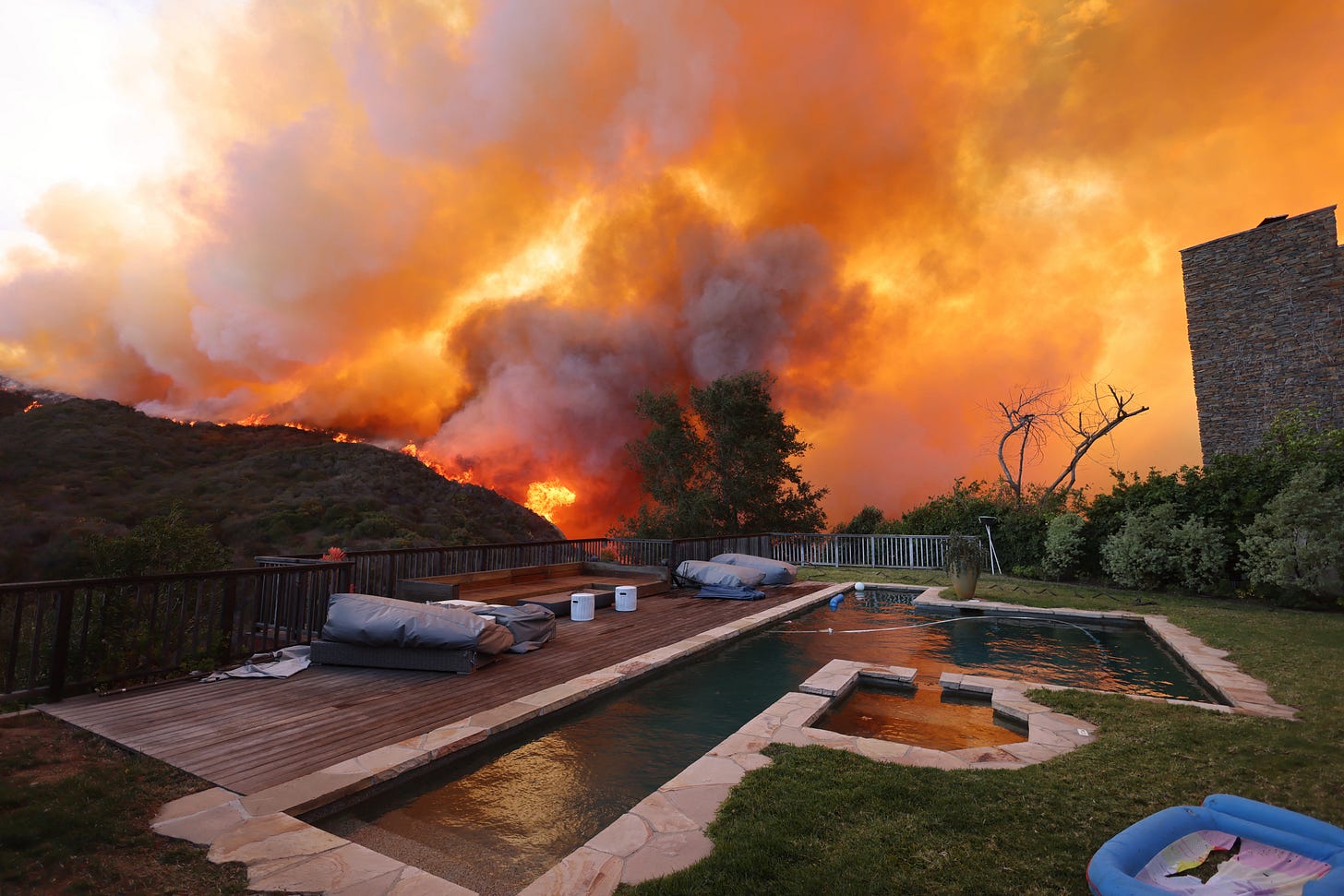
The potential collapse of insurance markets due to climate impacts, highlighted recently by Allianz, vividly illustrates what will happen if governments fail to adequately respond to climate change. Günther Thallinger, a member of the insurance giant's board, warned that pretty soon the company won't be able to cover climate risks — an impact that will ricochet through financial services. "The financial sector as we know it ceases to function," he wrote in a LinkedIn post. "And with it, capitalism as we know it ceases to be viable."
When climate risks make large segments of global assets uninsurable — think entire districts or even cities vulnerable to flooding or wildfire — the foundations of capitalism wobble. Without significant political intervention, these pressures will dramatically widen social divides, fueling migration or even revolutionary movements.
The above scenarios could collectively heighten the risk of an often overlooked possibility: one where a single nation or group of nations unilaterally decides to deploy a stratospheric aerosol injection (SAI) — a type of geoengineering that, theoretically, reduces the effects of climate change by lowering overall solar radiation entering the atmosphere. However, the effects of such geoengineering strategies on rainfall patterns may inadvertently alter downwind rainfall patterns, or even cause "termination shocks" to temperature when ceased.
Middle-income "buffer zone" countries, like Mexico or Turkey, that may be overwhelmed by a surge of migration, could view an SAI as a way of reducing migration pressure. So, too, might democratic countries whose governments want to take action on climate change but can't find a global policy consensus. Craig Martin, co-director of the International and Comparative Law Center at the Washburn University School of Law, and Scott Moore, a University of Pennsylvania political scientist, have described the SAI scenario as a conceivable cause for war, possibly declared by autocratic or oligarchic nations that are negatively affected, or that are looking for excuses to seize resources or territories.
To prevent this spiraling scenario of violence, economic disruption and political breakdown, we need urgent, proactive international cooperation. In addition to dramatic climate change prevention efforts, we must include legally binding resource-sharing treaties, humane migration frameworks and collaborative adaptation efforts, where richer nations help poorer ones.
Climate change's profound reshaping of conflict dynamics is already underway. The question facing humanity now is not whether we will confront these pressures, but how we will choose to do so: through cooperation and proactive governance or through escalating militarization, inequity and instability. Our collective response today will define the peace and stability of tomorrow's world.
WAR
[The Israeli/US-Iran war now risks WWIII. Israel is driving genocide in Gaza to take Palestinian land. The goal with Iran is to erase Iran as the major power in Southwest Asia to prevent Israel from completing its hegemony over the region.
Because the Zionist control of the US Congress has been purchased over the last seventy years, the American corporate media is controlled by Israeli propaganda. Below are alternate sources that balance the heavily distorted information available in America and its Empire.]
Iran Owns The Sky (Iran War, June 18-19)
June 19, 2025
Iran just hit not 'Israeli' stock market and not a hospital, but these were nonetheless very important hits. Iran “asserts aerial dominance over the central and northern parts” of occupied Palestine and they demonstrated it powerfully with its 14th wave of attacks today.
After the first 13 waves of True Promise 3, 'Israel' imposed broad censorship to make not this problem but the appearance of a problem go away. 'Israel' was getting shellacked, people were sending video to all their contacts, and they tried to put the genie back, doing the only thing they know how to do, attack. Minister of Comical Evil Ben Gvir said they'd crack down on anyone sharing video, and I actually thought sources would be lacking. But, boy, was I wrong about that.
Iran hammered 'Israel' so bad in the 14th wave that I suddenly had shots from multiple angles and even aspect ratios. As the kids say on the Internet, we're so back.
Not The Stock Market
This, for example, was a hit on I don't know what, it was mislabeled on social media as the stock market, but it's not. The Tel Aviv stock market is 5 km away and seems fine, though it is crashing in other ways. I know this in the same way that you can know this, just go on Google Street View and look. In one video I saw a Hebrew sign for Menora Mivtachim (an insurance company), you can find that, and look around. The buildings match.
As I've said, when you impose broad censorship, rumors spread with no reliable sources to counter them. In this case, 'Israel' ended up with a worse story than what actually happened, people are saying the stock market was whacked, which it wasn't, but it's still bad to have people saying that. What happened is nonetheless important. Whatever Iran hit (I'll wait for their word on it), it was in the center of 'Israel's' financial district, which the Iran now “asserts aerial dominance over.” and in statement #12, the “IRGC now warns Israel will no longer be able to withstand economic blows.” And, I mean, that's what happened. There she blows.
This was a display of dominance above all, and what a dominant display it was. Despite very public military censorship, this hit was filmed from multiple angles, across multiple locations, and even aspect ratios, here it is horizontally.
0:00 /2:30
And Lil Uzi Vertically,
0:00 /3:47
Here's some photos for good measure.
Again, I don't know what the target was until Iran tells me, but it was hit. It wasn't the physical stock market, but stock in 'Israel' is going down irregardless. According to The Cradle, a reputable source, Iran pulled a gun on 'Israel's' financial sector by hitting this rich neighborhood. As The Cradle reported,
Iran strikes blow to Israel’s $475 billion stock market —— Tel Aviv’s financial sector was rocked on Thursday morning following Iran’s missile strike on the Ramat Gan area, one of Israel’s key economic hubs. As news of the attack spread, financial markets responded sharply. Traders rushed to offload assets, triggering a wave of emergency sell-offs. Within hours, Israel’s benchmark stock index dropped by more than three percent—its steepest single-day decline since the 2023 war on Gaza. Based on official figures estimating the Israeli capital market at $475 billion, the drop translates to a $14 billion loss in market value.
So even though Iran didn't actually hit the stock market, they nonetheless made the stock market go down. This was a body blow to the demonic economy and in landed, as much through rumor as reality, but that's just the way the fog of war blows.
Not A Hospital
Iran did officially clarify the reported hit on Soroka Hospital, saying they hit two command centers nearby, and Soroka just got the blast wave. I honestly don't give a shit. 'Israel' destroyed every hospital in Gaza and hit Farabi Hospital in Iran two days ago, it would still be less than proportional. But the Resistance are better men than me, let's see what they say.
According to Statement No. 12 of the IRGC:
The 14th wave began with a combination of kamikaze drones and strategic missiles. **The regime's army command and intelligence center, near a hospital, was targeted with high precision and pinpoint accuracy. Israel deliberately placed its command center in adjacent to its hospital.
Israel has evacuated its military centers and has deployed its useless defense systems in the middle of urban centers, covering public places.**
The IRGC says it has previously warned that the entire sky over the occupied territories is defenseless and there would be no safe spot.
IRGC now warns Israel will no longer be able to withstand economic blows.
0:00 /0:20
"Iranian TV published a video showing the Sensitive Military and Intelligence Center it targeted inside “Israel”." (via FotrosResistancee)
FotrosResistancee (AryJeay, our man in Iran) reported that,
Iranian TV published a video showing the Sensitive Military and Intelligence Center it targeted inside “Israel”. It shows key military command and intelligence centers. Hubs where Israel planned the attacks on Iran, succesfully targeted by Iran.
Israel’s Central Command for Communications, Control, and Intelligence (IDF C4I HQ), as well as the Israeli Army’s main intelligence and operations HQ located in the Gav-Yam in Tel Aviv, were among the targets of this operation. This complex is situated near Soroka Hospital, which Israel deliberately put next to. These sensitive sites were targeted in recent hours by missile strikes by the Iranian Armed Forces.
In light of the ongoing operational plan of Iran’s armed forces, Iran warned settlers to urgently leave the occupied Palestinian territories.
TECHNOLOGY
Medium
The low-altitude leap: how China is owning the sky below 1,000 meters
Enrique Dans June 20, 2025
The so-called low-altitude economy — or 低空经济 in the language of the country leading its development — refers to all commercial activities involving the transportation of goods and passengers in the airspace below 1,000 meters. The Bank of America Institute defines it as a new ecosystem powered by the convergence of drones and electric vertical take-off and landing aircraft (eVTOLs), extending the traditional “last mile” vertically into the sky.
The projections are staggering. From 2025 to 2030, the global civil eVTOL fleet is expected to grow at an average annual rate of 62%. By 2045, the market for urban air mobility could reach $61 billion. This isn’t just an emerging trend — it’s the next major frontier for logistics, passenger transport and public services.
And China is reaching that frontier with a commanding lead. Thanks to the manufacturing powerhouse of the Shenzhen cluster — home to DJI, Ehang, and a dense network of suppliers — it already produces 70–80% of the world’s commercial drones. This industrial scale drives down costs in ways few competitors can match. In 2024 alone, China accounted for 79% of approved drone-related patents and had over 2.2 million drones in operation. The Civil Aviation Administration of China (CAAC) projects the domestic low-altitude economy will grow to trillion RMB (approximately $490 billion) by 2035.
This industrial advantage is reinforced by a tightly coordinated public policy. In 2024, China’s National Development and Reform Commission created a dedicated department for the low-altitude economy. Thirty provinces have integrated it into their development plans, and six cities — Shenzhen, Hangzhou, Hefei, Suzhou, Chengdu, and Chongqing — already operate permanent low-altitude flight corridors below 600 meters. The result: a unified regulatory framework that contrasts sharply with the fragmented policies slowing similar efforts in the United States and Europe.
On the ground — and increasingly in the air — Shenzhen is branding itself as a sky city. Approved by national authorities for beyond visual line of sight drone flights, Meituan uses drones for surveillance, hospital logistics and food delivery. Meanwhile, in March, EHang became the first manufacturer licensed to carry passengers in eVTOLs and is preparing to launch regular routes in Guangzhou and Hefei. Each flight feeds operational data back into engineering and regulation, creating a feedback loop of real-world testing and accelerated innovation — something no Western country has managed to replicate at scale.
The combination of industrial scale, domestic demand, regulatory foresight, and homegrown innovation is giving China a systemic advantage in shaping the future of low-altitude flight. While the United States debates the security risks of Chinese drones and the EU slowly pilots isolated test projects, Beijing is already crafting a de facto global standard — reminiscent of its approach to high-speed rail and electric vehicles. As before, the first to master the learning curve stands to claim the lion’s share of long-term gains.
For the rest of the world — especially developing economies looking to diversify their industrial base — the message is clear: competition no longer takes place solely on the ground or in traditional cockpits. Increasingly, it’s happening in that slim layer of air between skyscrapers and the clouds. To ignore it is to forfeit a major share of the urban and logistical growth of the coming decade.
singularityhub.com
Honda Surprises Space Industry by Launching and Landing a New Reusable Rocket
Edd Gent June 19, 2025
The private space race has been dominated by SpaceX for years. But Japanese carmaker Honda may be about to throw its hat in the ring after demonstrating a reuseable rocket.
Space rockets might seem like a strange side hustle for a company better known for building motorcycles, fuel-efficient cars, and humanoid robots. But the company’s launch vehicle program has been ticking away quietly in the background for a number of years.
In 2021, officials announced that they had been working on a small-satellite rocket for two years and had already developed an engine. But the company has been relatively tight-lipped about the project since then.
Now, it’s taken the aerospace community by surprise after successfully launching a prototype reusable rocket to an altitude of nearly 900 feet and then landing it again just 15 inches from its designated target.
“We are pleased that Honda has made another step forward in our research on reusable rockets with this successful completion of a launch and landing test,” Honda’s global CEO Toshihiro Mibe said in a statement. “We believe that rocket research is a meaningful endeavor that leverages Honda’s technological strengths. Honda will continue to take on new challenges.”
The test vehicle is modest compared to commercial launch vehicles, standing just 21-feet tall and weighing only 1.4 tons fully fueled. It features four retractable legs and aerodynamic fins near the nose of the rocket, similar to those on SpaceX’s Falcon 9, which are presumably responsible for steering and stabilizing the rocket on its descent.
Honda said the development of the rocket was built on core technologies the company has developed in combustion, control systems, and self-driving vehicles. While it didn’t reveal details about the engine, Stephen Clark of Ars Technica writes that the video suggests the rocket burns liquid cryogenic fuels—potentially methane and liquid oxygen.
Honda says the goal of the test flight, which took place on Tuesday in Taiki, Hokkaido and lasted just under a minute, was to demonstrate the key technologies required for a reusable rocket, including flight stabilization during ascent and descent and the ability to land smoothly.
In a video of the launch shared by Honda, the rocket lifts off, retracts its four legs, and then rises smoothly to 890 feet. It then hovers briefly and extends its fins before returning to the launch platform, deploying its legs just before touchdown.
With this successful test flight, Honda joins an elite club of companies that have managed to land a reusable rocket, including SpaceX, Blue Origin, and handful of Chinese startups. It’s also beaten Japan’s space agency (JAXA) to the milestone. The agency is developing a reusable rocket called Callisto alongside the French and German space agencies, but it has yet to conduct a test flight.
The company is currently targeting a suborbital launch—where the spacecraft reaches space but doesn’t enter into Earth orbit—by 2029. But Honda says it has yet to decide if it will commercialize the technology.
Nonetheless, the company noted the technology could have synergies with its existing business by making it possible to launch satellite constellations that could help support the “connected car” features of its vehicles. And it is already developing other space technologies including renewable-energy systems and robots designed to work in space.
Whatever their decision, this launch shows the barriers to space are falling rapidly as a growing number of companies develop capabilities necessary to push into Earth orbit and beyond.
MORE LINKS
Medium
Q&A: Epidemiologist Anne Rimoin Knows All This Has Happened Before (and It Will All Happen Again)
The UCLA Professor of Epidemiology and director of the Center for Global and Immigrant Health discusses pandemics, Covid and bird flu, and the role of art in her life and the role of her work in art
Pluralistic
[Plura-list] Your Meta AI prompts are in a live, public feed
Cory Doctorow June 19, 2025







